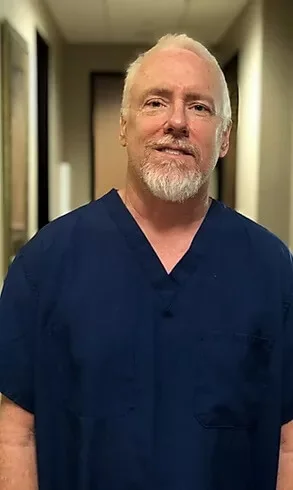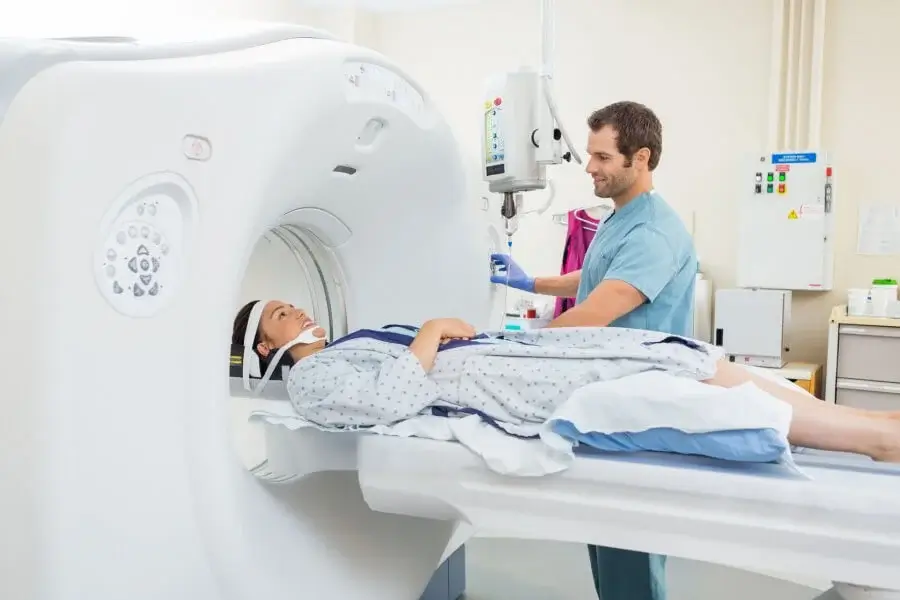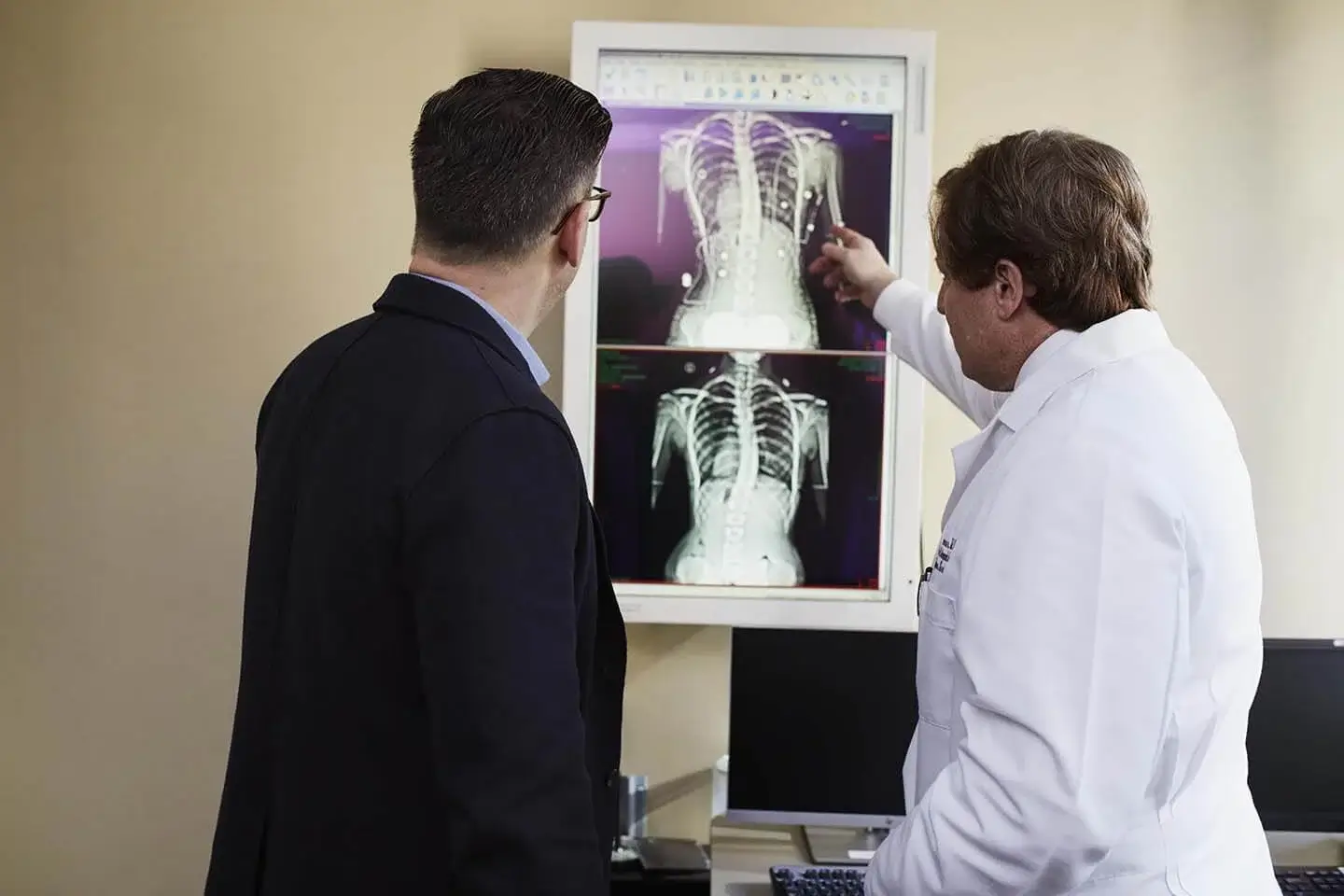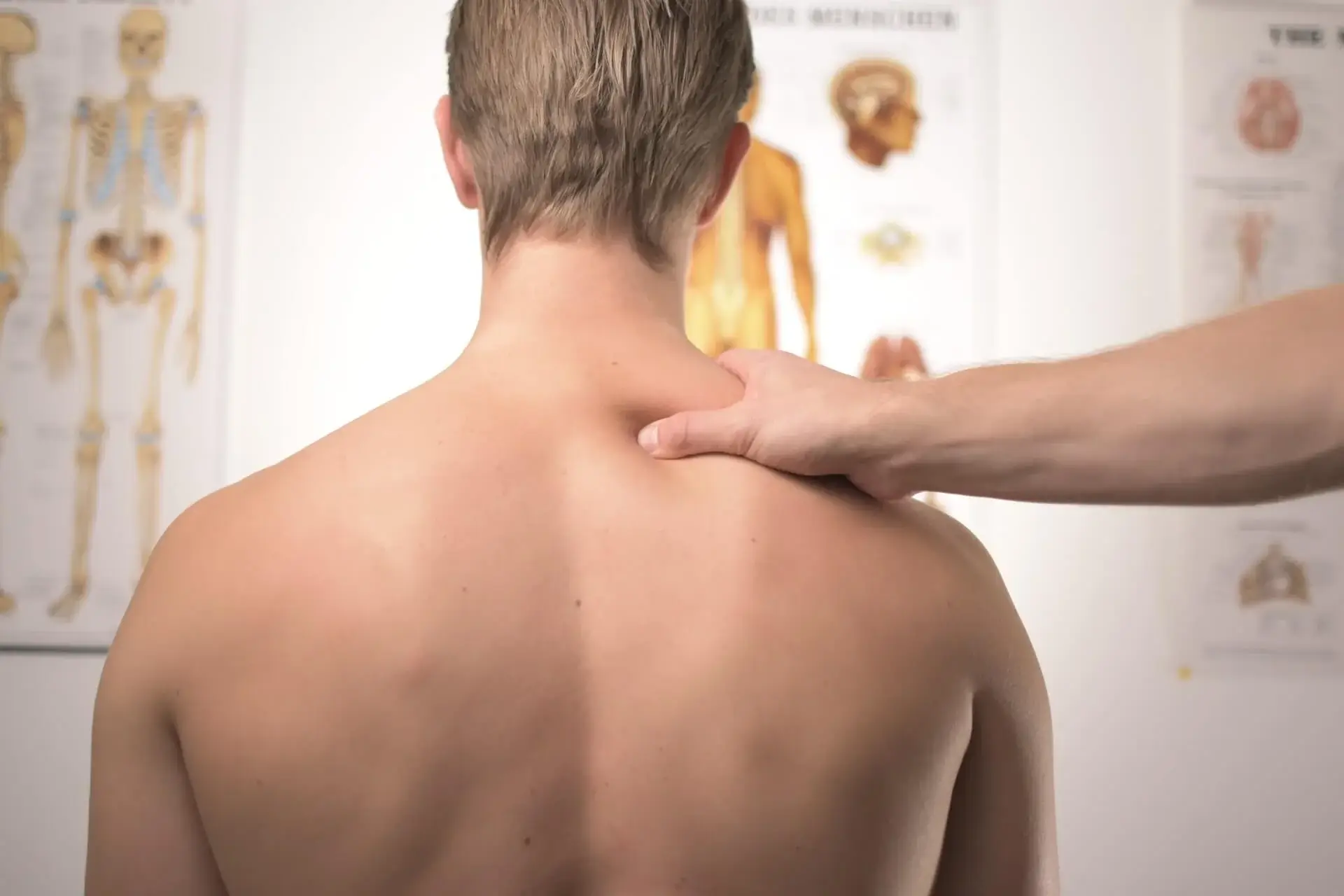Welcome to East Mesa Orthopedics & Sports Medicine
East Mesa Orthopedics & Sports Medicine
Welcome to East Mesa Orthopedic & Sports Medicine. Our staff has been serving patients of Mesa, Gilbert, Tempe, Chandler, Queen Creek, and Phoenix, Arizona for over three decades. Getting you back to the active lifestyle you desire is our goal. Our surgeons and staff specialize in the complete care of your musculoskeletal system; including diagnosis, treatment, and prevention of injuries to the muscles, bone, joints, tendons, and ligaments in patients of every age. We desire to help you regain full mobility and function while alleviating your pain.

Specializing in Orthopedics & Sports Medicine
Injections
ACL Repair
Arthroscopy
Bone Fractures
Carpal Tunnel
Knee Surgery
Sports Medicine
Meniscus Repair
Arthritis Management
Foot and Ankle Surgery
Rotator Cuff Surgery
Shoulder & Elbow Surgery
Joint Replacement Surgery
Trauma Injury Management
Hip, Shoulder, & Knee Care
Your Surgery
Meet Our Team
Stephen E. Hatfield, D.O.
Orthopedic Surgeon
Board Certified, American Osteopathic Association
Special Interest in Arthroscopic & Sports Related Surgery
Dr. Hatfield is one of the areas most respected orthopedic surgeons. He has a subspecialty interest in arthroscopic surgery and sports-related injuries. He specializes in arthroscopic reconstructive procedures such as ACL reconstruction, shoulder Rotator Cuff repairs, and Total Knee Arthroplasty.
Dr. Hatfield is available for consultations and general orthopedic procedures through our office.
Undergraduate Degree
BS, Zoology, Arizona State University, Tempe, Arizona
Medical Degree
Texas College of Osteopathic Medicine, Ft. Worth, Texas
Internship
Mesa General Hospital, Mesa, Arizona
Orthopedic Surgical Residency
Philadelphia College Osteopathic Medicine, Philadelphia, Pennsylvania
Professional Memberships
- American Osteopathic Association
- American Osteopathic Academy of Orthopedics
- Arizona Osteopathic Association
Hospital Affiliations
- Arizona Spine and Joint
- Arizona Specialty Hospital
- SurgCenter Gilbert
- Banner Gateway Hospital
- Banner Desert Surgery Center
Dr. Hatfield
New Patient Information
We must review your medical history to ensure we can give you the best care possible. Any information about your previous injuries, diagnosis, and treatment are all essential information we can use to conceptualize your treatment plan.
All your previous medical records must be sent to us at East Mesa Orthopedics before your initial visit or brought to your appointment. You may have to reschedule your appointment if you don’t bring us these important documents during your initial appointment. We will also message you if we need your records in advance before your appointment. It is your responsibility as the patient to bring us the following essential records of Orthopedic Surgery and Sports Medicine: Previous x-rays, CT scans, or MRI scans: The reports and films must be given because reports alone are insufficient.
We must review your medical history to ensure we can give you the best care possible. Any information about your previous injuries, diagnosis, and treatment are all essential information we can use to conceptualize your treatment plan.
All your previous medical records must be sent to us at East Mesa Orthopedics before your initial visit or brought to your appointment. You may have to reschedule your appointment if you don’t bring us these important documents during your initial appointment. We will also message you if we need your records in advance before your appointment. It is your responsibility as the patient to bring us the following essential records of Orthopedic Surgery and Sports Medicine: Previous x-rays, CT scans, or MRI scans: The reports and films must be given because reports alone are insufficient.
Your results of previous testing or treatment EMG’s, physical therapy, etc. and any brace or support prescribed for use.
We will verify all your information, such as personal and insurance information, your address, contact information, etc. Once you finish the registration, we will take you to the first available examination room.
One of our physicians will review your medical history and records. Our physician will examine you to determine your treatment. Your needs may necessitate help from our medical team, which may include a medical or physician’s assistant to assist.
We will present the information to a specialist once we gather your pertinent information. The specialist may review your records, medical history, and even perform another physical exam to ensure an accurate diagnosis.
Once we finish your examination and record reviews, you will receive an explanation of your diagnosis and other findings based on your examination. We will recommend measures for your ongoing care, which may include operative or nonoperative treatments. We may need to perform additional testing (MRI, CT, etc.) before your recommendations are finalized.
At the end of your visit, we will provide you with the steps on follow-up appointments and procedures. We will give you instructions to obtain more information and how to get answers to questions that might pop up.
We will need at least an hour of your time for the initial visit. If your needs are more complex or emergencies come up, then we may take longer or schedule additional appointments.
MRI’s, Scans and X-ray
MRI
Magnetic Resonance Imaging is also known as MRI, combines a powerful magnetic field, radio waves, and an advanced computer system to create detailed images of your organs, bones, soft tissues, and other internal structures in your body. Your tissue abnormalities are often better in MRI over CT. You are not in danger of radiation in an MRI machine.
Your MRI will take anywhere between 30 minutes to an hour. MRIs take images at cross-sections of your body. You must remain still throughout the scan. The machine often produces loud knocking noises. A comprehensive screening follows after your scan. The scan requires special considerations if you have tattoos, cardiac pacemakers, and metal implants. The scan has a weight limit you must meet because the table can only support a certain weight. The opening for the scan may prevent you from using it if you are overweight.
- Imaging of your soft tissue, internal structures, and organs.
- The scan will show your abnormal tissue.
- The MRI does not expose you to radiation.
CT/CAT Scan
Computed (Axial) Tomography (CT or CAT scan) is a commonly used painless exam that may take you anywhere from 5-20 minutes. The scan combines the power of computers and X-rays to give a 360-degree cross-section view of your body. CT is also able to show your bones, soft tissue, and blood vessels. It gives your radiologist details about your bony structures and injuries.
The machine is designed in a tube style shape with a slim front and back but takes your comfort into account. The CT scanner has a weight limit, and you cannot use it if you are too overweight. The CT scans are painless but expose you to some radiation. Please take note of the radiation exposure and ask your doctor if you’re healthy enough for the scan.
- The Scan provides images of your bones, soft tissue, and blood vessels all at once.
- Pinpointing the exact issues in your bony structures commonly sustained from injuries.
- You are not subjected to magnets in this scan, which makes it safe if you have metal implants.
X-ray
X-rays use small amounts of radiation to quickly capture a single image of your body to help assess your injuries or diseases. Your bones are naturally dense and will block the radiation to appear white on an X-ray. Your specialist will then review your X-ray and write a report about their findings.
- Your specialist can assess your injuries by examining your X-ray.
- The X-ray is a low-cost procedure that won’t hurt your wallet and is used as a first step.
Pre-Op Instructions
Our pre-operative staff will call you before your scheduled surgery to relay pre-operative instructions. Please take note and listen to all the instructions given to you, or you may risk complications during your surgery.
1. Do not consume anything after midnight before your surgery. Even water and coffee are not allowed, or you will have to cancel the surgery.
2. Your primary and other necessary physicians must have completed your preoperative medical evaluation for clearance. Be sure you have followed all instructions and discontinue any medications that you were instructed to stop.
3. A phone call will be made to you before the surgery. The phone call will inform you of what time to arrive. Arrive 2 hours before your surgery time because unforeseen surgeries and cancellations may cause delays. Please keep your schedule flexible on the day of the surgery. You should arrive 2 hours before your surgery. Do not arrive late, or your surgery may need to be rescheduled.
4. You must have someone who can accompany you home when you schedule an outpatient surgery. A narcotic or sedative will be given to you for the operation. You cannot travel alone in your partially functional state. You also need them to stay with you for the first 24 hours after your surgery.
Anesthesia
General Anesthesia Instructions
This the anesthesia you’re likely to run into in your surgery. It’s potential risks and benefits will be explained to you during the preoperative phase of your treatment. An anesthesiologist will be assigned to your treatment to educate you.
Regional Anesthesia Instructions
This anesthesia is an injection that renders your entire limb numb. You will receive instructions about how long the numbness will last. Please call the facility where you had your operation and speak to a post-anesthesia care nurse for assistance. The nurse can answer your questions or direct you to a doctor that can help you.
Spinal Anesthesia Instructions
This anesthesia will be given to you when you undergo total joint replacement surgery. Your anesthesiologist will discuss all the potential risks in the preoperative phase of your treatment. You will also receive postoperative instructions to help your recovery.
Physical Therapy
Physical Therapy
Rehabilitation is one of the critical parts of your recovery. This process helps return your body to its best state. Most of your surgeries will require physical therapy for the best results. Your doctors can help you through this process and lead you to the physical therapist that can help you the most.
Cast Care
How to take care of your cast
Physical Injuries often require a cast to hold your bones in place as it heals. Casts are not impervious and need your proper care to maintain. Be sure to follow these instructions to ensure you cast’s structural integrity to let it help your body heal properly.
- Elevate your cast above the chest-level to keep the swelling down for the first 24-48 hours.
- Apply ice packs when you experience pain and swelling.
- Never wet your cast.
- Maintain your cast by keeping it clean and dry.
- Never put anything in your cast.
- Do not add pressure or weight to your cast for the first 24 hours to let it harden.
- Follow your doctor’s instructions about proper cast treatment.
Shoulder Care Post-OP
Post Surgery Care
You must learn how to care for your wound after surgery to avoid complications. Read on to find out how to care for your shoulder incisions to ensure an optimal recovery process.
Post Rotator Cuff Surgery Care
- Take your regular medications at home.
- Elevate and apply ice on your shoulder daily.
- Keep your arm to the side while taking a shower.
- Position yourself in an upright position when sleeping.
- Get an appointment within 10-14 days for a check-up.
- Use hydrogen peroxide to clean your wound every day.
- It’s normal to see some light drainage from your incisions.
- Don’t forget to always wear your shoulder immobilizer except when you shower.
- You must change your wound dressing in 2 days and replace it with a 4 x 4 gauze pad.
- You can shower in three days without a bandage, but you must keep your wound dry.
- Only use Ibuprofen/ Motrin when you experience discomfort unless instructed differently.
Shoulder Surgery Care
- Continue your home medications.
- Elevate and keep your shoulder on ice.
- Do not lift anything heavy to avoid hurting yourself.
- There might be some light drainage from your incisions.
- Clean your incision using hydrogen peroxide every day.
- Use your sling as needed, but it’s ok to remove it in 1 or 2 days.
- Remove your dressing in 2 days and change it with a 4×4 gauze pad or bandaids.
A shoulder block may keep your arm numb for the next 12-24 hours after your surgery. Take pain medication as soon as you reach home before the block wears off. This will help you control the pain from the surgery.
- Be sure to take your medications as prescribed.
- You may use Motrin/Ibuprofen or Advil when more discomfort arises unless instructed otherwise.
- Make an appointment for your checkup and suture removal in 10-14 days after your surgery.
- You must eat a healthy diet to aid in your recovery.
When you shower for the first 2 days, you must cover your incisions and keep them dry. Keep your arm near to your side to avoid getting your wound wet. You can get your incision wet on the third day but do not use soap. Clean your incision with peroxide after your shower and keep it dry as much as possible.











